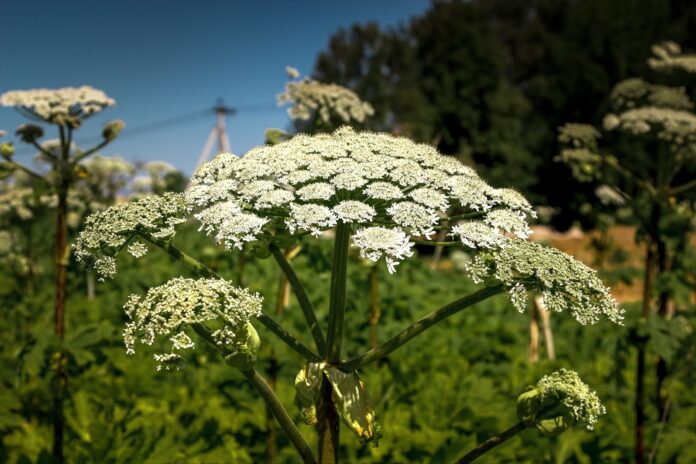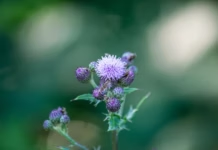Homeowners are being urged to familiarise themselves with Britain’s most dangerous plant and what to do if they come into contact with it.
Green-fingered experts at GardeningExpress.co.uk have revealed everything Britons need to be aware of when it comes to Giant Hogweed.
This comes after a teen was left with a blister the size of an orange after brushing past the plant whilst cycling.
Although it’s not illegal to have on your property, Hogweed is considered just as, if not more dangerous than Japanese Knotweed as it poses a threat to human health.
Chris Bonnett, founder of GardeningExpress said: “It’s vital that people familiarise themselves with what giant Hogweed looks like as the effects of coming into contact with the plant are extremely serious.
“The plant typically grows in damp and moist environments and I urge anyone who spots it to get in contact with their local council or an experienced gardener.
“Trying to handle Hogweed on your own could result in some serious burns and blisters which could require surgery. When the sap from the plant comes into contact with the skin, it prevents the skin from protecting itself from the sunlight which can cause a serious burn.
“We’re hoping that by sharing some information on the plant, we can help keep everyone safe from Hogweed.”
What you need to know about Hogweed:
- Why is it so dangerous
The sap from Hogweed is toxic and is released as the plant’s defence mechanism. When the sap comes into contact with the skin, it prevents it from being able to protect itself from the sunlight, making the skin extremely sensitive. This then causes severe burning and blistering when exposed to sunlight.
- What it looks like
Hogweed is a tall plant that looks like cow parsley and has white flowers displayed in umbrella-like clusters. Its stems have purple and white blotches with white hair shooting out.
- Where does it grow
Hogweed flowers typically grow in June and July in open, moist and damp areas and along streams, rivers and in woods so take care when walking, running or cycling in these areas. It can also be found in open gardens, roadsides and waste grounds.
- What to do if you spot it
If you spot Hogweed in a public space then you should report it to the local council. If you think you have Hogweed in your garden then call an experienced gardener and avoid trying to handle it yourself.
- What if you come into contact with Hogweed
Hogweed becomes dangerous when we come into contact with the sap.
If this happens immediately wash the affected area with some mild soap and cool water and avoid exposing this to any sunlight to minimise the damage.
If you notice that blisters begin to form then seek medical attention. Some irritation can be treated with steroid creams but more serious reactions could require surgery. If the sap gets into your eyes then see a doctor straight immediately.

| [donate]
| Help keep news FREE for our readersSupporting your local community newspaper/online news outlet is crucial now more than ever. If you believe in independent journalism,then consider making a valuable contribution by making a one-time or monthly donation. We operate in rural areas where providing unbiased news can be challenging. |



















